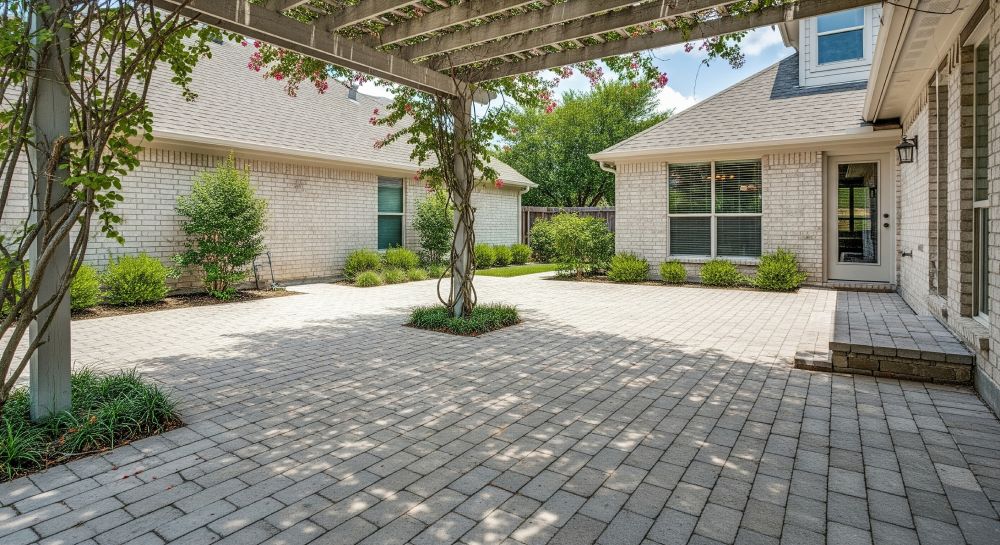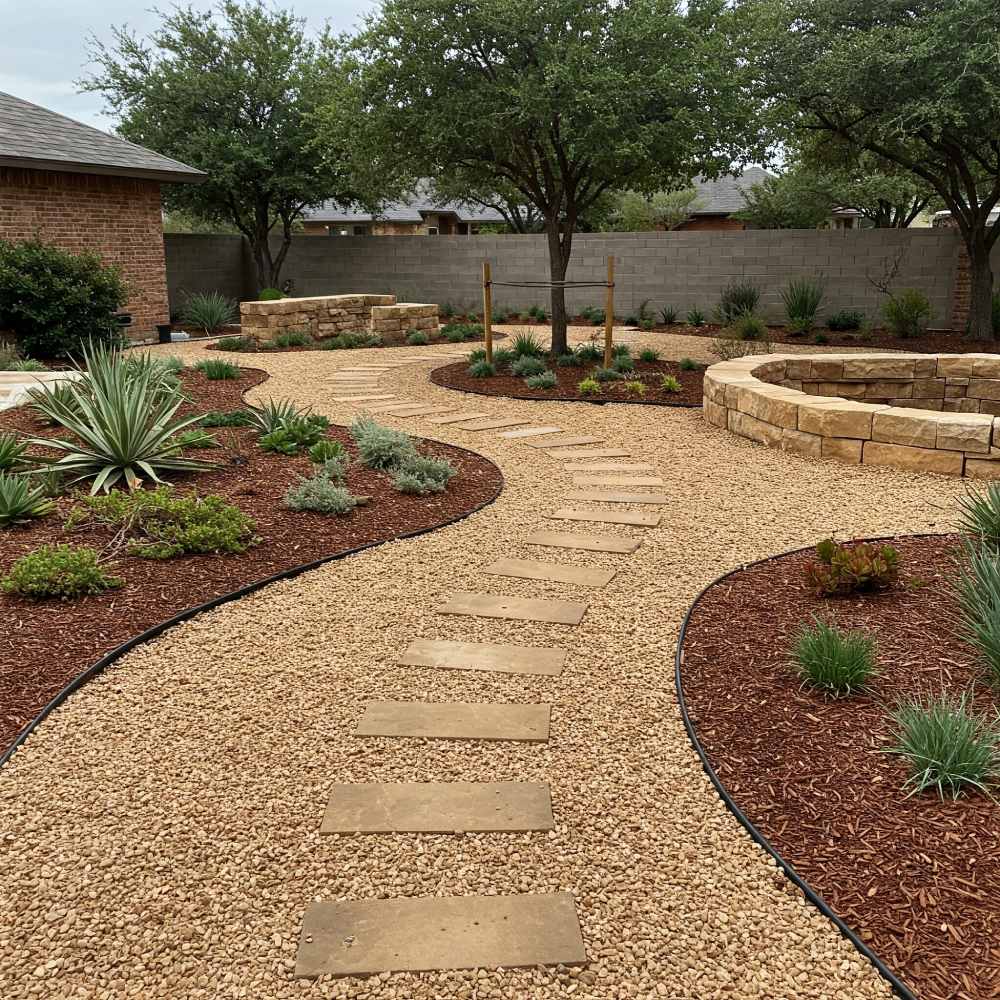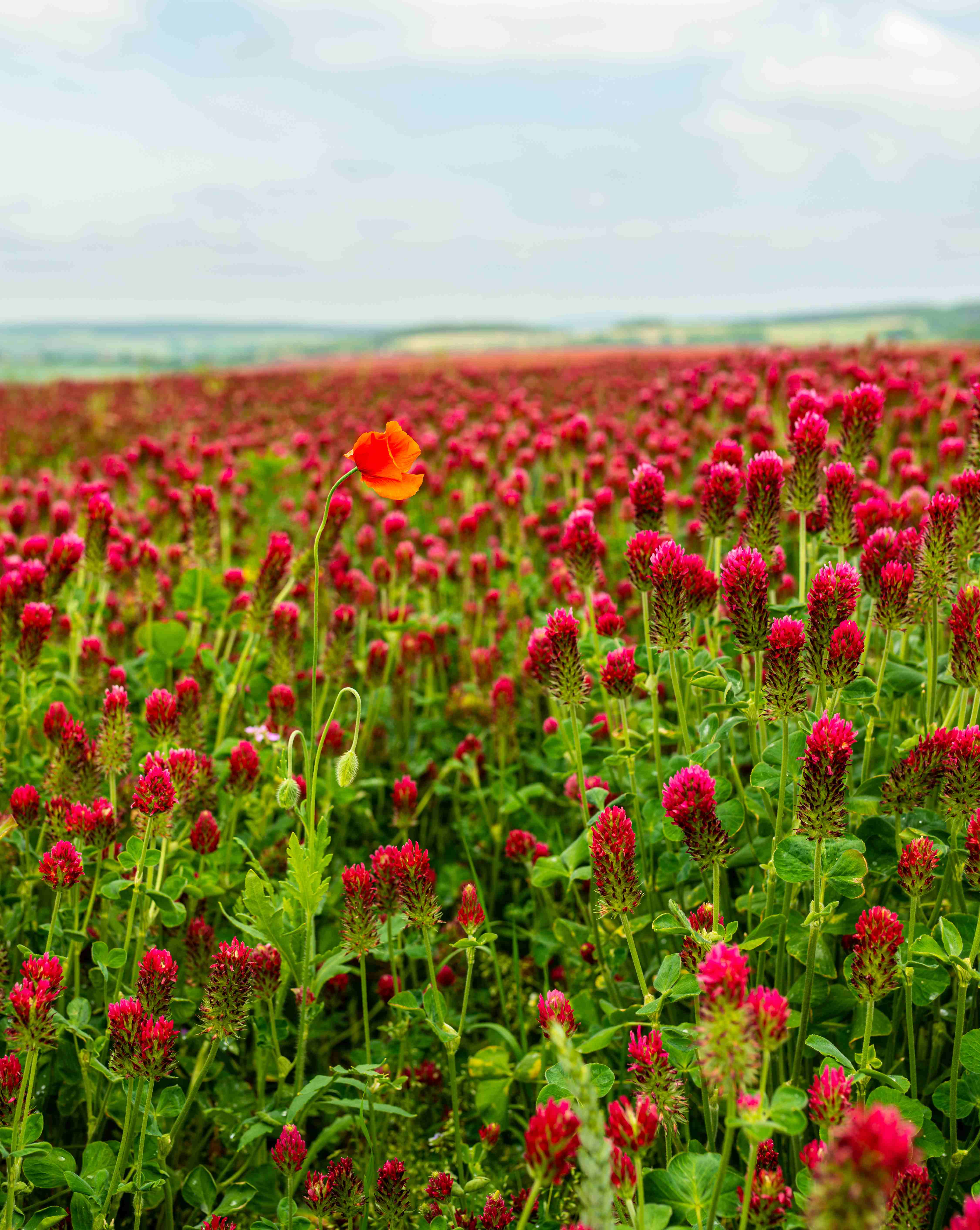
5 Best Clover Lawn Ideas for a Lush Backyard in 2025
5 Best Clover Lawn Ideas for a Lush Backyard in 2025
As a landscape design company with over 10 years of experience shaping outdoor environments, we’ve seen firsthand how clover lawns can revolutionize a yard. These low-maintenance, eco-friendly alternatives to traditional grass solve practical challenges like water conservation and soil health while opening up a world of creative possibilities. With 2025 approaching, we’re excited to share five expertly crafted clover lawn ideas—along with some additional insights—to help you transform your property into a sustainable, visually appealing space. Let’s explore the details.
Table of Contents
- What is a Clover Lawn?
- What Are Clover Lawns Made Of?
- #1 Design a Clover Lawn Pollinator Haven
- #2 Create a Clover Lawn Pathway
- #3 Build a Clover Lawn Play Area
- #4 Incorporate a Clover Lawn Accent Patch
- #5 Blend a Clover Lawn with Native Gardens
- Honorable Mentions: Small Clover Lawn Ideas
- Honorable Mentions: Clover Lawns for Sloped Yards & Frontyards
What is a Clover Lawn?
At its essence, a clover lawn is a ground cover composed primarily of clover species—typically white clover (Trifolium repens) or microclover—used in place of conventional turf grass. It’s a smart solution for reducing maintenance, as clover requires less mowing, water, and fertilizer while naturally enriching soil with nitrogen. Beyond its practical benefits, it’s a cornerstone of sustainable landscape design, supporting pollinators and adding a soft, lush texture. Success hinges on proper site preparation and species selection to match your climate and usage needs.
What Are Clover Lawns Made Of?
The foundation of a clover lawn lies in choosing the right clover variety, each offering distinct traits to suit your vision. As landscape designers, we assess factors like foot traffic, sunlight, and soil conditions before recommending an option. Below, we’ve outlined the most dependable clover types, complete with their strengths and considerations, to help you craft the perfect lawn for 2025.
White Clover Lawn
White clover (Trifolium repens) is the classic choice for clover lawns, known for its durability and charming white blooms. Growing 4 to 8 inches tall, it thrives in full sun to partial shade and tolerates moderate foot traffic, making it ideal for mixed-use yards. Its nitrogen-fixing roots improve soil health, but it can spread aggressively, so we recommend edging or mowing (once monthly) to keep it contained. It’s a pollinator magnet—perfect for eco-conscious designs.
Microclover Lawn
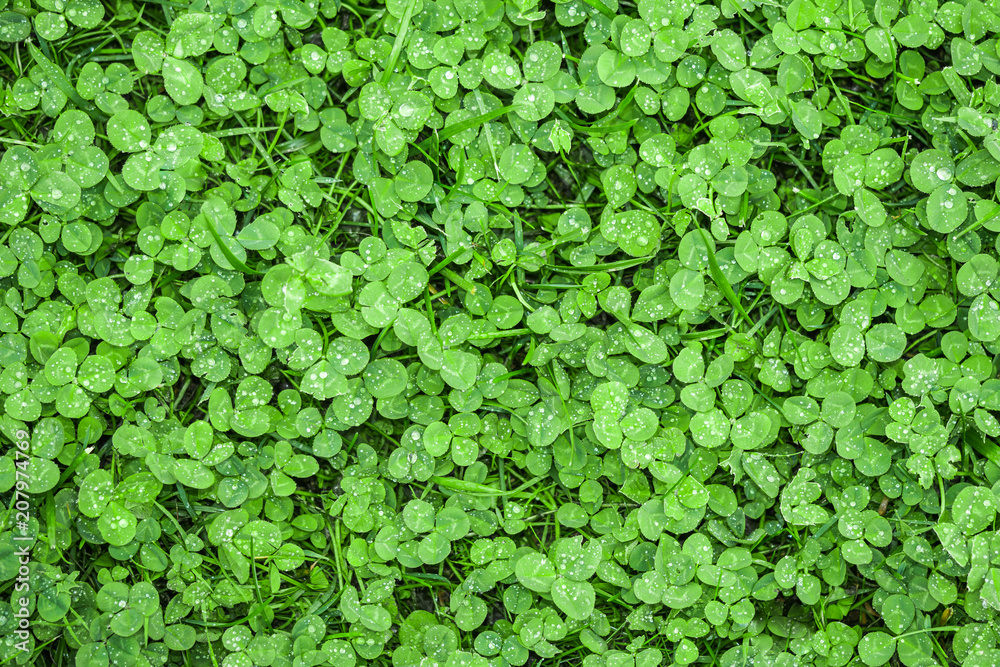
Microclover, a dwarf variety of white clover, offers a finer texture and lower profile (2 to 4 inches), mimicking traditional grass more closely. It’s bred for uniformity and resilience, handling wear better than its larger cousin while requiring minimal water. We often suggest it for high-traffic areas or polished aesthetics, though it’s pricier per seed pound. Pair it with a light grass mix for a seamless, low-maintenance look..
Red Clover Lawn
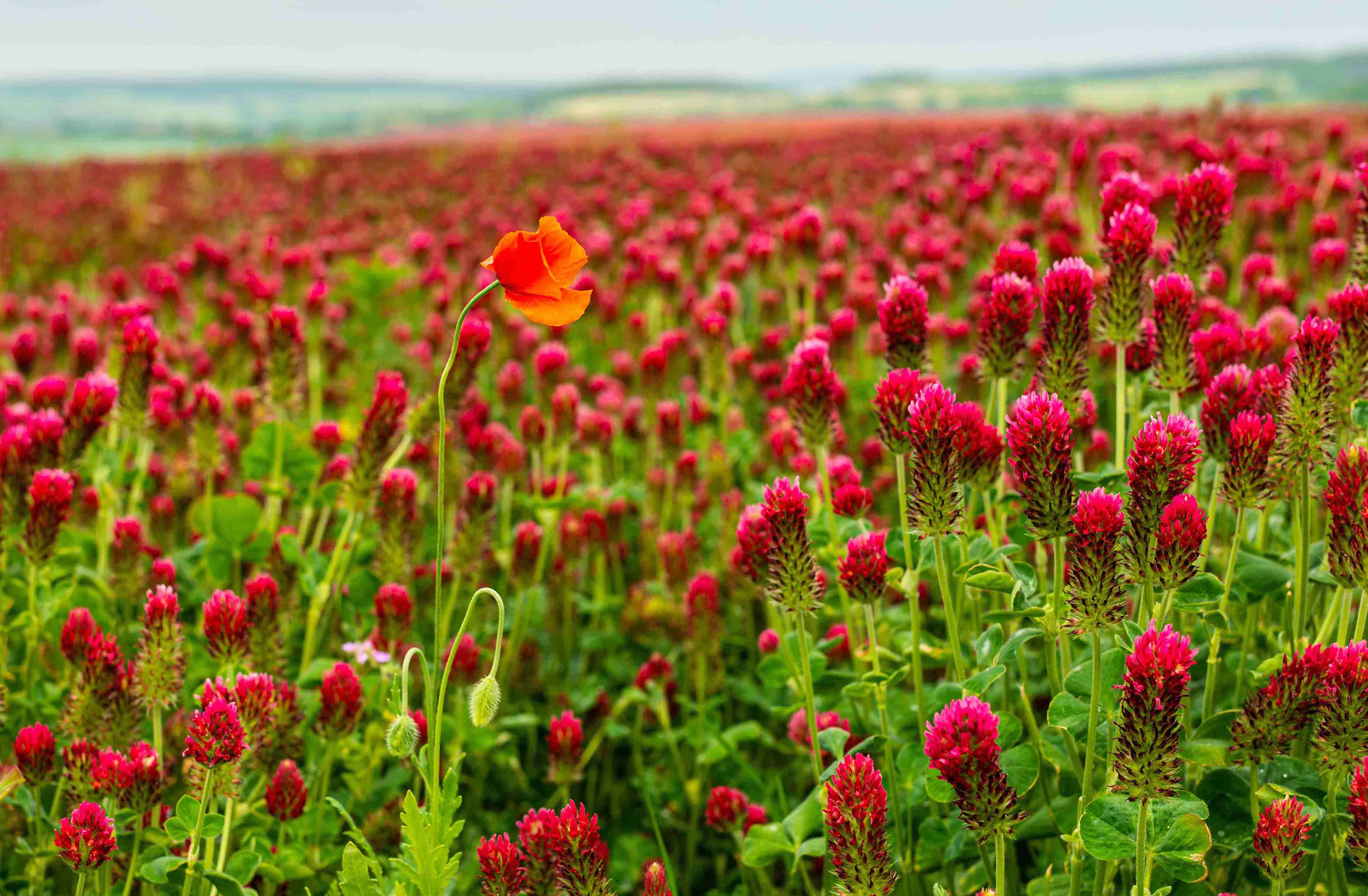
Red clover (Trifolium pratense) brings a taller, bolder presence (up to 12 inches) with vibrant pink-purple flowers. It’s less common as a standalone lawn due to its height but excels in wilder, meadow-style designs or as a temporary cover crop. It’s hardy and drought-tolerant, though less suited to heavy use. We recommend it for rural properties or as a seasonal accent.
Lavender Clover Lawn
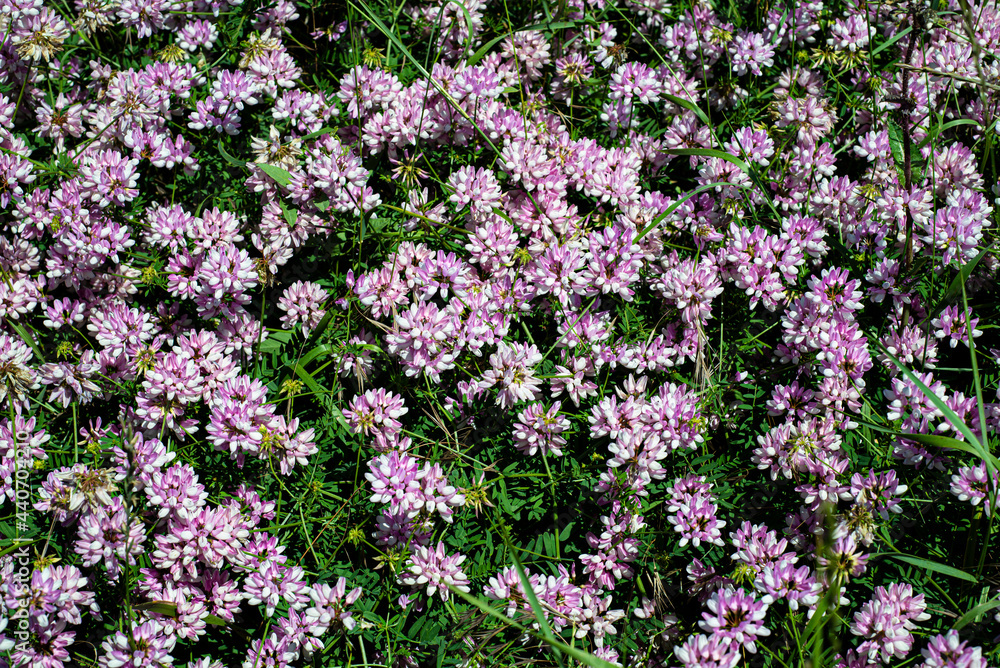
Lavender clover, a subtype of white clover, strikes a balance with its medium height (3 to 6 inches) and vigorous growth. It’s widely available, affordable, and adaptable to various soils, making it a go-to for budget-friendly projects. Its dense mat suppresses weeds naturally, but it may need occasional overseeding in thin spots. We use it for broad, casual lawns with a naturalistic vibe.
Crimson Clover Lawn
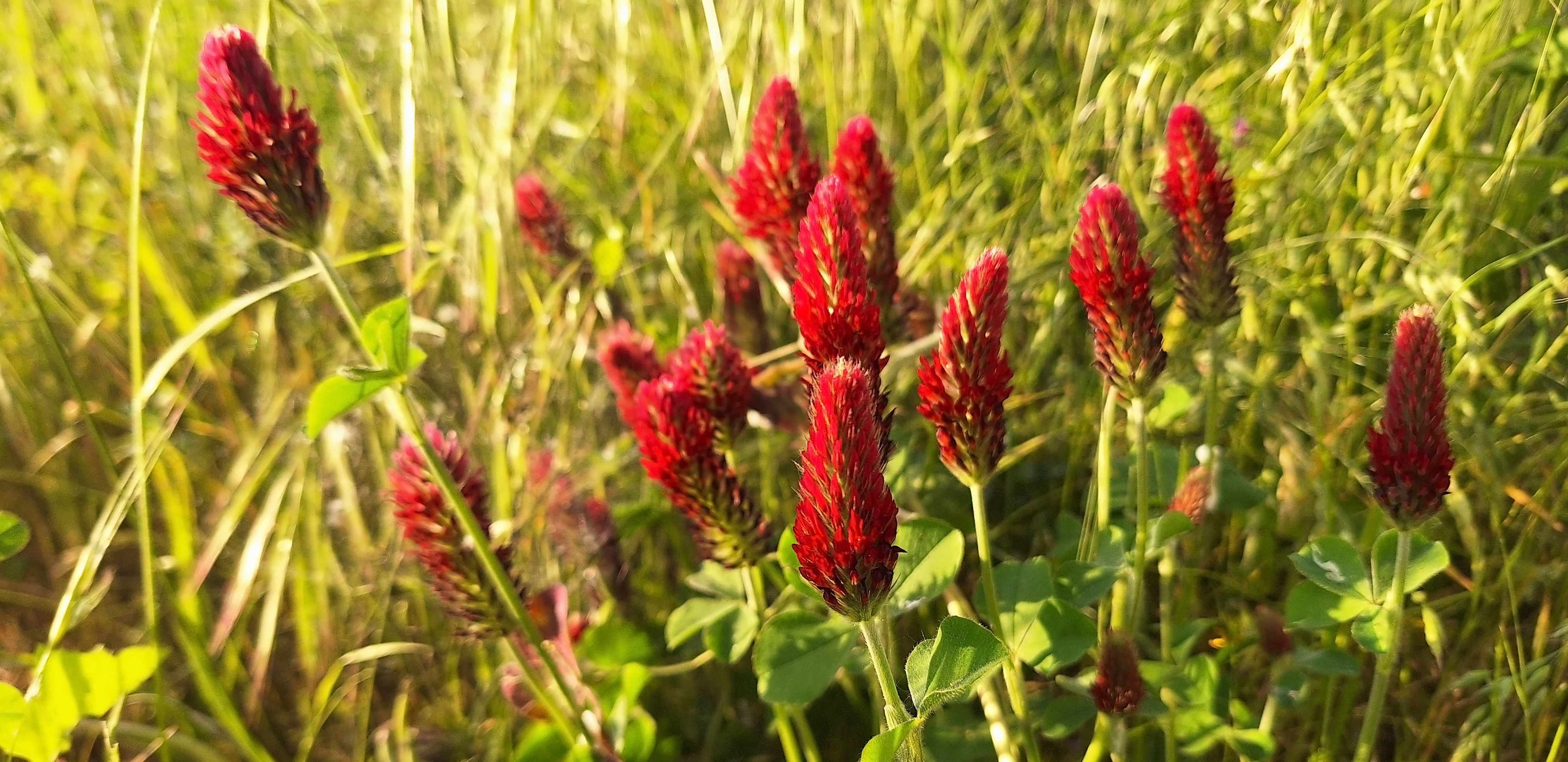
Crimson clover (Trifolium incarnatum) stuns with deep red blooms and a fast-growing habit, often used as an annual cover rather than a permanent lawn. Reaching 12 to 18 inches, it’s less practical for heavy traffic but shines in decorative patches or erosion control on slopes. Its quick establishment makes it a favorite for instant impact—just plan to reseed yearly.
Each clover type brings unique benefits, and the best choice depends on your yard’s conditions—sun exposure, traffic levels, and drainage—along with your design goals. A well-selected clover ensures a thriving, low-care lawn that enhances your outdoor space.
#1 Design a Clover Lawn Pollinator Haven
One of our top recommendations is turning your clover lawn into a pollinator haven. Sow white or Dutch white clover across a sunny expanse, letting it bloom freely to attract bees and butterflies. For structure, edge it with low native shrubs like wild indigo or coneflower. We prep the soil by removing existing grass, aerating, and mixing in compost for a nutrient boost—clover loves well-drained loam. This design cuts mowing to once or twice a season, saves water, and supports local ecosystems, making it a win for both you and nature.
#2 Create a Clover Lawn Pathway
For a charming, durable walkway, we suggest a clover lawn pathway. Lay microclover between stepping stones or pavers, planting it 1/2 inch deep in a sand-soil mix for quick rooting. Its tight growth withstands light foot traffic while softening hardscape edges. We’ve installed these with flagstone in winding patterns, adding thyme or chamomile for scent and variety. Keep it trimmed to 2 inches for neatness, and water sparingly once established—a low-effort feature with high visual payoff.
#3 Build a Clover Lawn Play Area
Clover lawns shine as safe, soft play zones for kids or pets. Opt for microclover or a white clover-grass blend, sown over a leveled, weed-free base with 4 inches of topsoil. Its cushion-like texture handles roughhousing, and it stays green with minimal care—perfect for busy households. In one project, we ringed the area with low boulders for seating, blending function and fun. overseed annually to maintain density, and mow occasionally to keep it tidy.
#4 Add a Clover Lawn Accent Patch
For smaller yards, a clover lawn accent patch adds charm without overwhelming the space. Plant a 5- by 10-foot oval of Dutch white clover near a patio or tree, framed with mulch or stone edging. We’ve paired this with ornamental grasses or a bench for a cozy nook. Sow seeds in spring at 1/4 pound per 1,000 square feet, raking lightly to cover, and water consistently for germination. It’s a subtle, low-maintenance way to introduce clover’s benefits.
#5 Blend a Clover Lawn with Native Gardens
Elevate your yard by blending a clover lawn with native garden beds. Use white clover as a base, transitioning into drifts of milkweed, black-eyed Susan, or switchgrass along borders. We design these with a slight mow line to separate zones, sowing clover at a lower density (1/8 pound per 1,000 square feet) to let natives shine. This combo boosts biodiversity, cuts irrigation needs, and creates a cohesive, meadow-like aesthetic—just ensure good drainage to avoid clover outcompeting its neighbors.
Honorable Mentions: Small-Scale Clover Lawn Ideas
Even tiny spaces can benefit from clover. A 3- by 3-foot microclover patch under a tree or along a fence adds greenery without fuss. We prep with a thin soil layer, scatter seeds, and water lightly for weeks—done. It’s budget-friendly and quick, enhancing tight corners with minimal upkeep.
Honorable Mentions: Clover Lawns for Sloped Yards & Frontyards
Slopes and frontyards are prime clover territory. On a backyard incline, crimson or white clover controls erosion—sow after scarifying soil, then mulch lightly. In frontyards, a microclover lawn boosts curb appeal with its manicured look; we’ve edged it with brick for polish. For both, a 2-inch gravel base aids drainage, keeping roots healthy.
These five clover lawn ideas, plus extras, offer a blueprint for a greener 2025. Whether you want a pollinator paradise or a play-friendly lawn, clover delivers sustainability and style. Ready to rethink your yard? Let’s make it happen.

